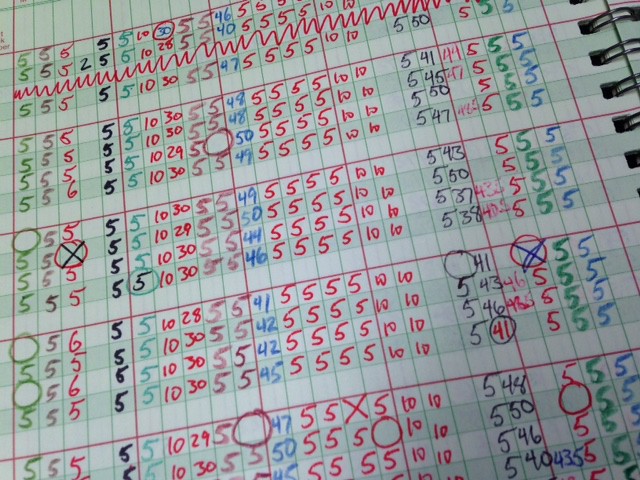Intellectual Virtues: Changing the Way You Think
Don’t copy the behaviour and customs of this world, but let God transform you into a new person by changing the way you think. Then you will learn to know God’s will for you, which is good and pleasing and perfect.
Romans 12:2 (NLT)
Teachers use a variety of routines in their classrooms to establish clear expectations that help keep things running smoothly. The same process used to establish management routines can also be used to develop thinking routines in the classroom. One of the goals of transformational education is that as students grow in their understanding of God and themselves, we want them to develop as thinkers. We want them to grow and develop intellectual virtues[1].
Intellectual virtues guide how a person p rocesses, interprets, and interacts with knowledge and truth. The virtues—which include curiosity, courage, honesty, carefulness, tenacity, fair-mindedness, humility, autonomy, and attentiveness—help to guide and develop someone’s disposition, or habits of mind. As Christian educators, we can identify what intellectual virtues are important for our courses, and then provide opportunities for our students to develop these virtues. This is true regardless of how openly we can talk about our faith in the classroom.
rocesses, interprets, and interacts with knowledge and truth. The virtues—which include curiosity, courage, honesty, carefulness, tenacity, fair-mindedness, humility, autonomy, and attentiveness—help to guide and develop someone’s disposition, or habits of mind. As Christian educators, we can identify what intellectual virtues are important for our courses, and then provide opportunities for our students to develop these virtues. This is true regardless of how openly we can talk about our faith in the classroom.
There are some practical tools that teachers can use to help develop intellectual virtues, but to be most effective these tools need to be used routinely. It is through practice and repetition that the students will begin to change the way they think, and to develop intellectual virtues. Here are two thinking routines that can be implemented into a variety of classroom settings.
See, Think, Wonder Routine: (intellectual virtues – curiosity, carefulness, attentiveness)
This routine can be used in a variety of ways; it encourages close observation skills, the ability to connect to prior-knowledge, and curiosity. Students write down or say what they see in a photo, painting, or science demonstration. As they are making these observations they are identifying details that help prepare them for learning new information. After they record what they see, the students can identify what they think about the picture or demonstration. This step activates prior knowledge and helps the teacher identify misconceptions. The last step is for the students to write questions or record what makes them wonder. As they do this, they are creating a purpose for learning. Students can use this routine to preview a text-book chapter or picture book, to make observations during a science demonstration, to create text-dependent questions for a reading passage, or to look at photos from a certain time period in history.
Connect, Extend, Challenge Routine: (intellectual virtues – courage, fair-mindedness, humility, autonomy) 
The Connect, Extend, Challenge (CEC) routine is a versatile thinking process that can be applied in many different settings. The students are asked to identify how what they are learning connects with their prior understanding or experiences. They then identify how the new learning extends their understanding. The last step asks the students to record either how the new learning challenges their prior-understanding, or what is challenging about the new learning. This routine provides opportunities for classrooms to identify possible distortions of truth, and equips students to be able to actively work through any misconceptions. Part of being intellectually humble is acknowledging that there are opportunities to learn in every situation. Intellectual courage empowers individuals to not shy away from standing up for truth, even when it is difficult. The combination of being courageous and humble means that students will be open to new learning, but not afraid to take a stand against distortions of truth. The CEC routine helps to facilitate this way of thinking. CEC can be used to record notes during a lecture or reading assignment, to activate prior-knowledge at the beginning of a unit, to reflect on a unit of study, or to organise a journal entry.
ELL Connection:
When combined with routines that require student discourse, such as Turn and Talk or Round Robin, these thinking routines use a great deal of language and students are highly engaged.
These routines were developed through The Visible Thinking Project. Researchers from Harvard’s graduate school of education have developed a series of routines that teachers can use in their classrooms to help develop intellectual virtues. These are just a few tools that educators can use to help develop Christian thinkers. The important thing to remember about routines is that they need to be used multiple times in a variety of ways. The goal is for the students to internalise these different approaches to thinking without having to be prompted by a teacher.
So, try out the Connect, Extend, Challenge routine yourself. How did this article connect with your experience as an educator? How did it extend your understanding of developing Christian thinkers? How has this article challenged you, or what challenges can you identify with using these routines in your classroom?
As we regularly practice these thinking routines in our classrooms, we will begin to see our students hone their own thinking and develop intellectual virtues. It allows us to open a door through which our students can experience God’s hand transforming them into a new person by changing the way they think.
Leighton Helwig, M.Ed.
Philippines National Director/Regional Education Specialist
TeachBeyond
[1] Philip E. Dow, superintendent of Rosslyn Academy in Kenya, has written a helpful book on the topic: Virtuous Minds: Intellectual Character Development.
Templates for both these routines can be found on the TeachBeyond wiki page.
Photo Credits: L. Helwig







